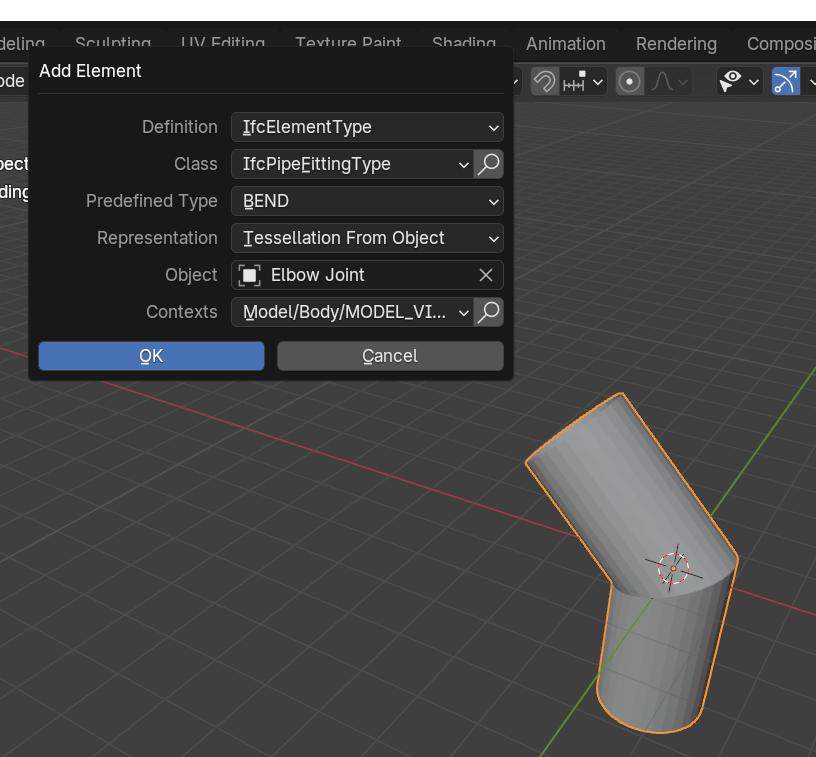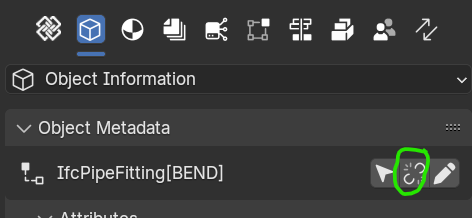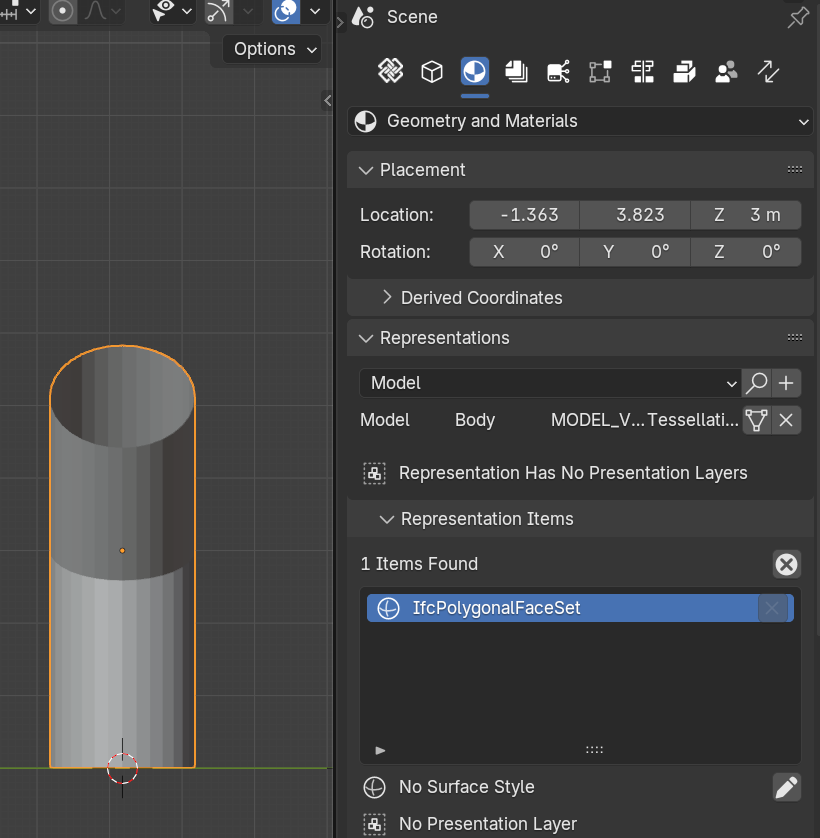@Roel
I would like to know what the implications are when using a Tessellation from Object to create a new type. I am using this process a bit to create pipe fittings (T,L…) from pipe Objects. I noted that the reference point is not in the origin but at the Object’s reference point. It looks like when the reverence point is moved the origin (0,0,0) the new type’s geometry is lost. (I am using Blender 4.3 with Bonsai 241127)
Could somebody please advise on the implications when “Tessellation from Object” is used to create a new Type.
I am not an IFC expert but I'll try to answer to your questions the best way I can:
A mesh is available in your model which you want to convert to an IfcElement or IfcElementType, by using "Tessellation from Object" the same 3D object becomes an IfcElement (for one instance) or IfcElementType (If you need multiple instances using the same "blueprint" and its properties or other inheritable features)
So using Blender you model something, in this example a pipe fitting created with "Extra Mesh Object" extension, when ready go to Add > IFC Element in the top menu and

- Is the link maintained to the Geometry of the Tessellation Object?
Yes, provided you consider what you use to be converted to IFC element as your "Tessellation from Object" thing, which lives inside the IFC element after being converted and is no longer aviable as a Blender 3D object. (You can return to it using Unlink Object in Object Information < Object Metadata - the broken chain icon)

- When changing the Geometry of the Tessellation Object what is the impact on the Type?
It changes the type, and all instances created with it, change can be perfomed on any of the type's instances by going into Object Mode pressing "Tab" once the instance is selected
- When changing the Attributes and Psets of the Tessellation Object what is the impact on the Type?
you can add Attributes and Psets to the IfcElementType (your bend now converted to an IfcPipeFitting.BEND) as a "data layer" that comes along with the representation (IfcPolygonalFaceSet in this case), they are not separate but part of a whole

- When changing the geometry of the new Type what is the impact on the Tessellation Object?
Maybe already answered in point 2
- What is the impact on the Type if the Tessellation Object is deleted/removed from the model?
Not sure what is the point but let me try, you can edit the geometry of an instance (or the type after making it visible..) but if you delete all the vertices it returns to its own previous shape, you can delete the type but your original mesh goes with it
Hope it helps, please advise
cheers


